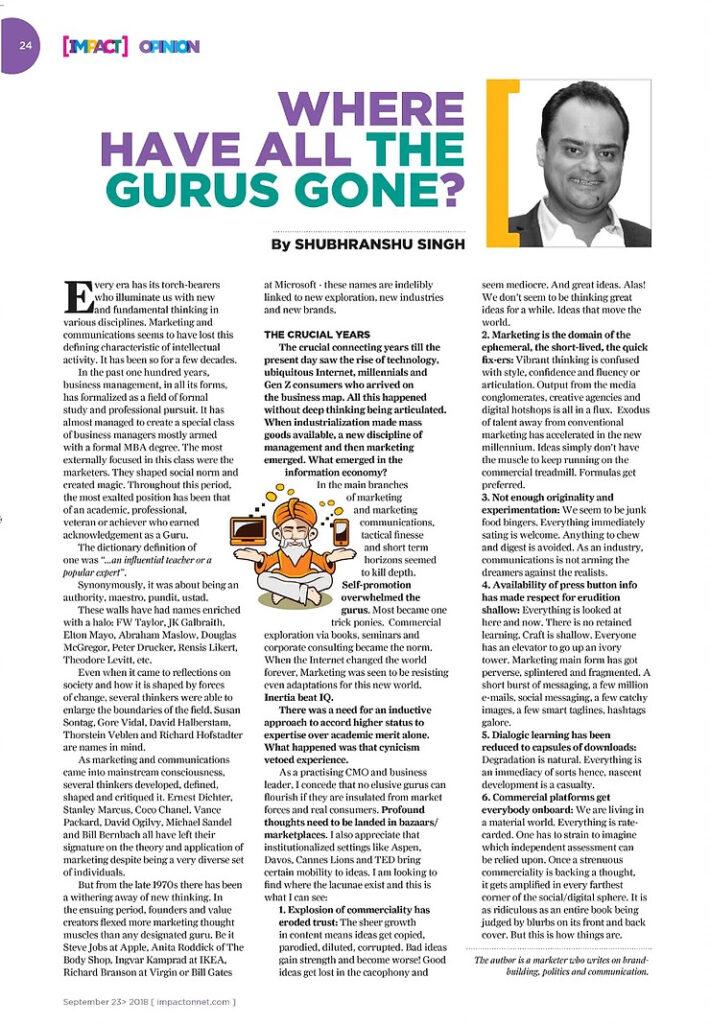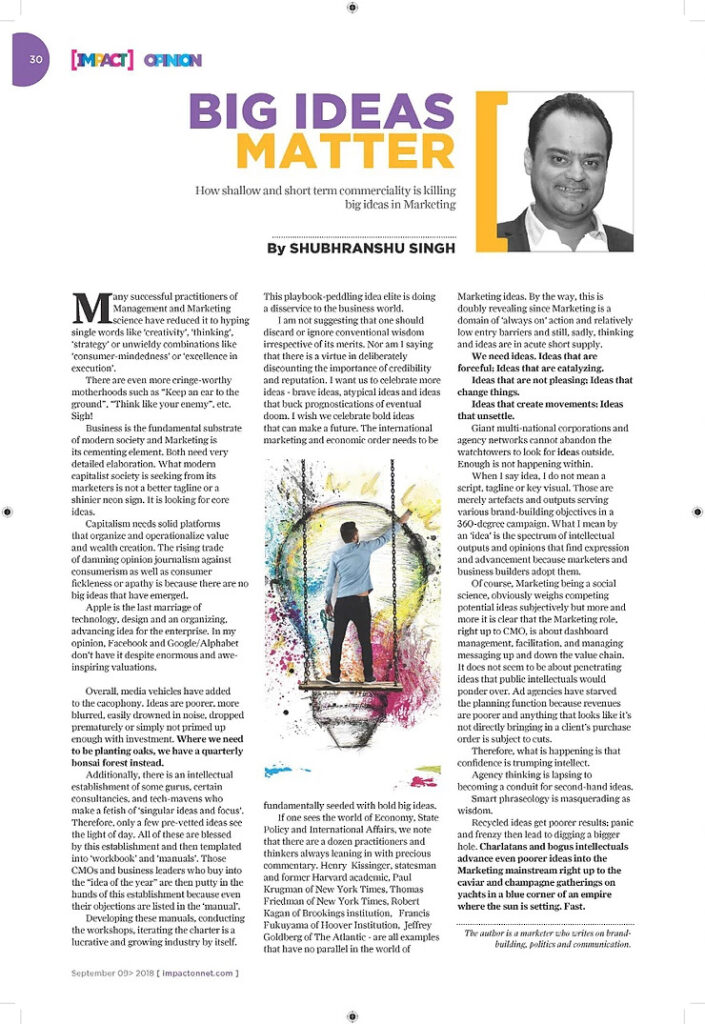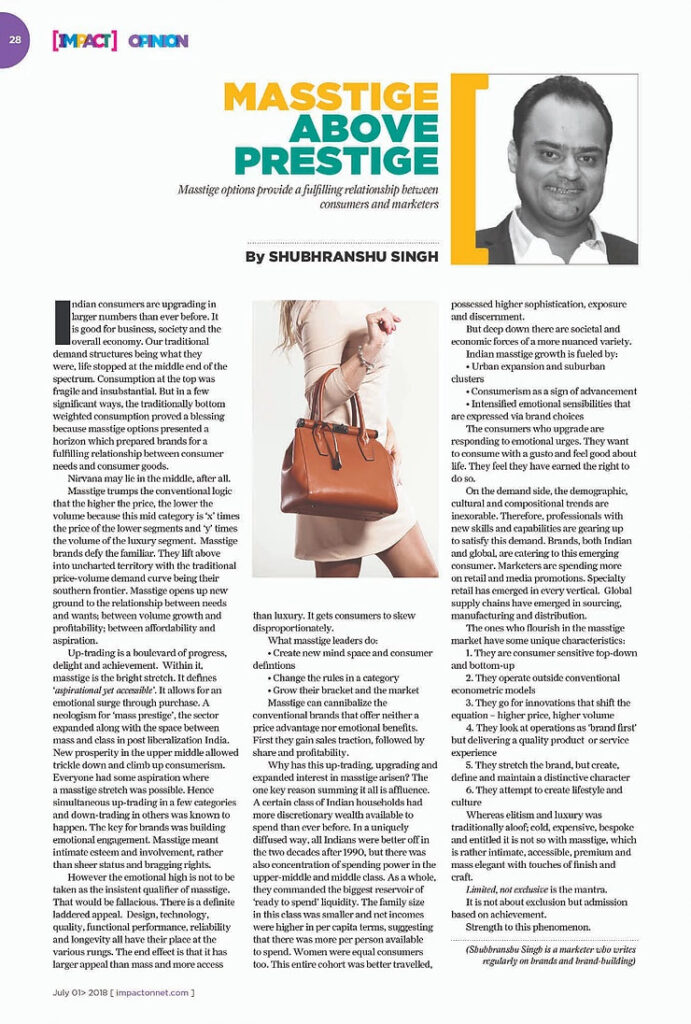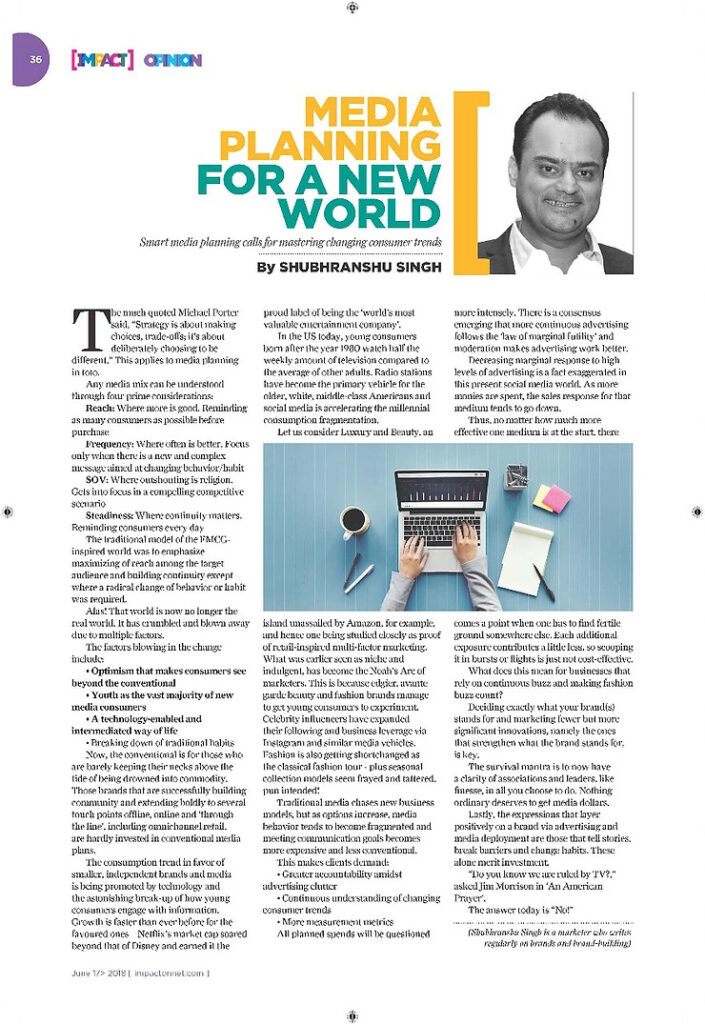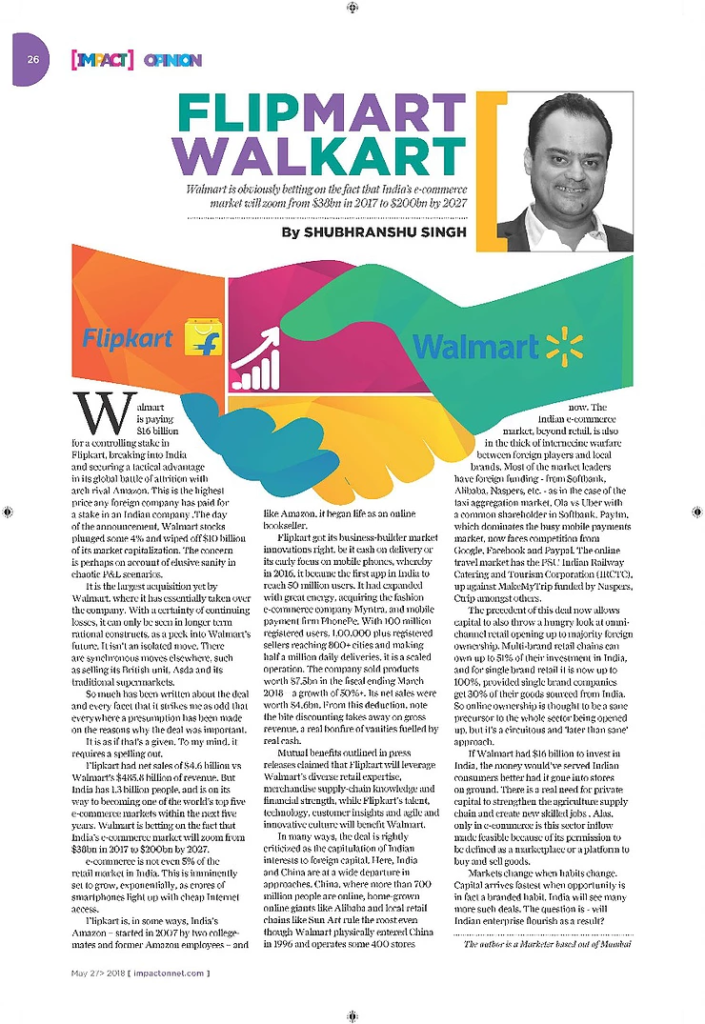Advertising And Its Psychological Rationale
As we gallop into a new Millenium, technology is creating irreversible changes in communication and dissemination. A look into the fundamental underpinnings of communication psychology will prove useful All human action is motivated. It stems from a desire to achieve a conscious or sub-conscious end. It, therefore, implies that understanding of the underlying motivations is key to communication design. It will assuredly lead to a greater payoff. Communication via paid media is the biggest marketing expenditure for most companies. Hence, the most effective return on advertising expenditure and investment is possible only when some strategic advantage is found which gives greater effect to every dollar thus spent. [siteorigin_widget class=”SiteOrigin_Widget_Image_Widget”][/siteorigin_widget] The theoretical foundations of effective advertising have also grown and changed with advances in psychology and other social sciences. Yet, universality in the manner of physical sciences is elusive in this realm. Everything which can be measured is not a fact. Everything which is not measurable is not false. What is measured is never beauty, aesthetics or emotion. Our experiences and sensibilities are immeasurably richer and more intricate than the methods and media we rely upon to describe and measure them. There has been a steady growth in our understanding of impact and response via advertising. The earliest view was that a consumer’s mind was like a clean slate. His neural network was primed with impressions that were repetitive. Such impressions then ‘owned’ mind space and built conditioned response eventually leading to ‘habit’. Thus, linkage and top of mind awareness were the keys to success. Imperfect and inadequate as it may seem today – upon closer inspection – one can see that this school of thought is alive and manifestly evident in practice. The concept of the ‘target’ group as a herd, amenable to manipulation still persists. The memory structures and furrows that are the maps for the ‘heuristics of habit’ omits the case of the non-steady state, new, original, fresh intenders. Psychology as a roadmap to consumer behavior in the 20th and 21st century is entirely derived from western schools of psycho- cognition. In its entirety, two branches of this theory form the foundations. These are Wertheimer’s gestalt and Freudian psychoanalysis. Gestalt psychology, very simply put seeks to explain perceptions in terms of the sum of constituents which emerges perceived more than the sheer sum. Rational evaluation as the substrate of behaviorism was prodigiously written upon and theoretically expounded by Max Wertheimer, Wolfgang Kohler, Kurt Kafka. Gestalt is about living in the conscious, alert, material world. It is acutely focused on rational justification and goal- achievement. The other major foundational platform is subliminal, subconscious, conflicted even traumatic. This ‘Freudian’ psychoanalysis was further developed by Carl Jung, in his theory of archetypes, Alfred Adler concerning personality theory and Erich Fromm who worked on Isolation and belongingness. Psychoanalysis postulates that a conflicted ego and instinct manifests itself behaviourally and we are mostly puppets on strings. Our conscious mind is only rationalizing our subconscious urges and drives. We are driven unconsciously to seek that which we fail to recognize or maybe unwilling to acknowledge consciously. Ideas are repressed because the conscious ego cannot accept them. With time, people also forget because they have achieved a ‘satisfactory’ adjustment. So, the two streams of thinking that aim to decipher the consumer’s actions have different conclusions about the development of personality. Psychoanalysis predicts that ‘traumatic experiences’ from birth onto weaning, toilet training, and puberty are all battles to master the forces of the environment. Therefore, the consumer is preoccupied with the symbolic aspect of goods, to utilize or possess them as a means of giving vent to suppressed desires. Symbols matter a lot more than we perceive it. Rationality, on the other hand, is about the cognitive process, mature reflection, and comparative judgement. Public means to appeal to ‘public’ life even of the individual, in everyday consumption, what is personal and deep is deemed somewhat irrelevant. The cognitive track assumed problem showcasing, solution storytelling, Unique Selling Proposition, and active comparison would be postulates of consumer rationality. Media and mass advertising took to rational ‘hard sell’ finding it a lot easier than to smartly recognize and put into effect symbolism that comprises personal and private inspirations. Moreover, rationality offered more chances of ‘word of mouth’ relay whereas ‘universal psychographic types’ proved elusive. Whereas symbols may be universal, consumer typologies abound in a confusing mass of theories. The Extrovert/Introvert of Jung, the Neurotic/Impulsive/Creative types of Otto Rank, besides several ‘orientations’ expounded by Erich Fromm. What remains missing is an integrative science of the image cutting across economics, psychology, sociology of groups and other branches of knowledge. What is clear is that the wisdom of the crowds is again being technologically trumped by the ever-present, always on modes of content communication. Therefore rationality, efficiency, and accessibility are given as granted. The billion dollar question is how will ‘data-driven’, technology-infused’’, global, young, new brands take this emotive, elusive, expressive aspect of the brand building into the future that is arriving already into our very busy world? http://www.businessworld.in/…/Advertising-And-Its-Psychological-Rationale/23-09 -2018-160638


